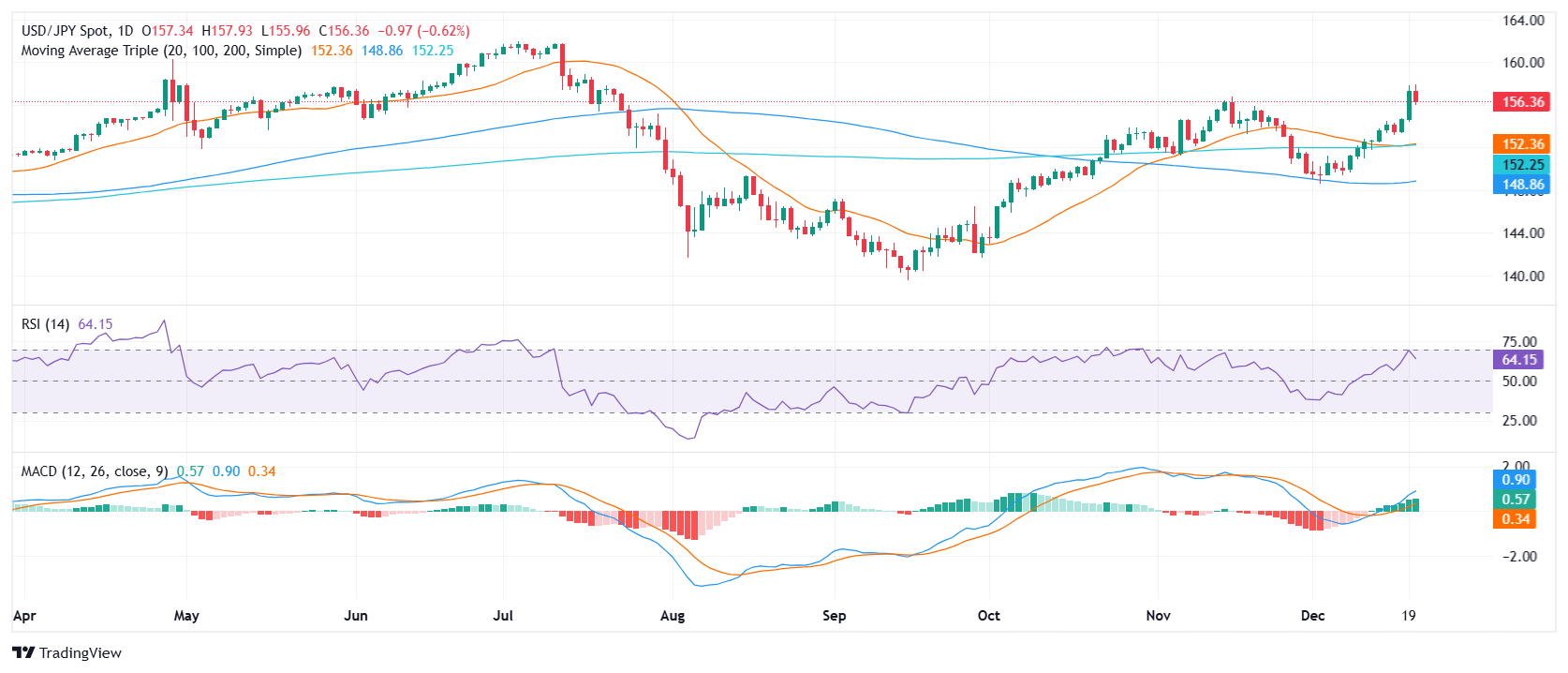- USD/JPY retreats below 157.00 at the end of the week.
- Traders dumped the USD after soft PCE data.
- The Fed’s hawkish outlook might limit the pair’s downside.
The USD/JPY pair pulled back from its highest levels since July, retreating to 156.50 following the release of US Personal Consumption Expenditure (PCE) data. Softer inflation metrics, coupled with insights from the Federal Reserve’s recent interest rate decision, moderated bullish momentum for the US Dollar. Meanwhile, the pair’s technical indicators signal caution despite maintaining an overall bullish bias.
The latest PCE data from the Bureau of Labor Statistics (BLS) revealed subdued price pressures in November. Prices for goods rose marginally by less than 0.1%, while service prices increased by 0.2%. Food and energy prices also registered a modest 0.2% increase. Excluding these volatile components, Core PCE rose by 0.1% on a monthly basis and by 2.8% year-over-year, below market expectations.
The Fed’s anticipated 25 basis point rate cut on Wednesday brought the key rate to a range of 4.25%-4.50%, levels last seen in December 2022. While the decision aligned with expectations, Fed Chair Jerome Powell’s reserved commentary on future monetary easing dampened hopes for aggressive rate cuts in the near term. Softer inflation data has since provided some reassurance, but uncertainty remains about the central bank’s next moves. The next highlight will be December’s labor data, to be released in early January of next year.
USD/JPY Technical overview
The USD/JPY’s retreat to 156.50 highlights a cooling in bullish momentum, with key technical indicators signaling mixed conditions. The Relative Strength Index (RSI) was rejected at the overbought threshold of 70, indicating potential exhaustion in the uptrend. Meanwhile, the Moving Average Convergence Divergence (MACD) histogram continues to print rising green bars, reflecting persistent bullish momentum.
Immediate support is observed at 156.00, with a break below this level potentially exposing 155.50 as the next key downside level. On the upside, resistance remains at 157.00, with a decisive break above this level required to retest recent highs. While the pair remains in a broader uptrend, a period of consolidation may be necessary before the next directional move.
Information on these pages contains forward-looking statements that involve risks and uncertainties. Markets and instruments profiled on this page are for informational purposes only and should not in any way come across as a recommendation to buy or sell in these assets. You should do your own thorough research before making any investment decisions. FXStreet does not in any way guarantee that this information is free from mistakes, errors, or material misstatements. It also does not guarantee that this information is of a timely nature. Investing in Open Markets involves a great deal of risk, including the loss of all or a portion of your investment, as well as emotional distress. All risks, losses and costs associated with investing, including total loss of principal, are your responsibility. The views and opinions expressed in this article are those of the authors and do not necessarily reflect the official policy or position of FXStreet nor its advertisers. The author will not be held responsible for information that is found at the end of links posted on this page.
If not otherwise explicitly mentioned in the body of the article, at the time of writing, the author has no position in any stock mentioned in this article and no business relationship with any company mentioned. The author has not received compensation for writing this article, other than from FXStreet.
FXStreet and the author do not provide personalized recommendations. The author makes no representations as to the accuracy, completeness, or suitability of this information. FXStreet and the author will not be liable for any errors, omissions or any losses, injuries or damages arising from this information and its display or use. Errors and omissions excepted.
The author and FXStreet are not registered investment advisors and nothing in this article is intended to be investment advice.
















